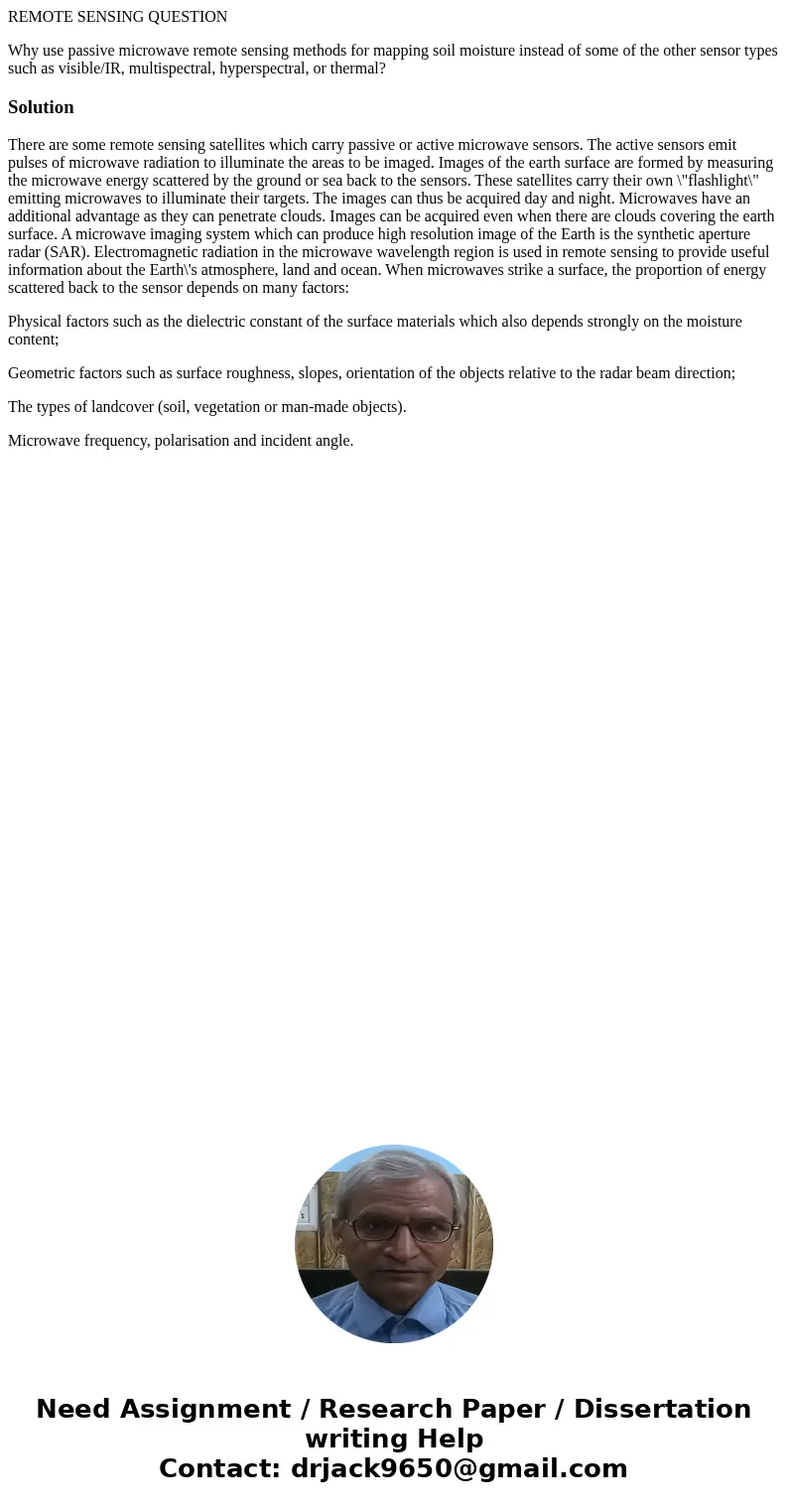REMOTE SENSING QUESTION Why use passive microwave remote sen
REMOTE SENSING QUESTION
Why use passive microwave remote sensing methods for mapping soil moisture instead of some of the other sensor types such as visible/IR, multispectral, hyperspectral, or thermal?
Solution
There are some remote sensing satellites which carry passive or active microwave sensors. The active sensors emit pulses of microwave radiation to illuminate the areas to be imaged. Images of the earth surface are formed by measuring the microwave energy scattered by the ground or sea back to the sensors. These satellites carry their own \"flashlight\" emitting microwaves to illuminate their targets. The images can thus be acquired day and night. Microwaves have an additional advantage as they can penetrate clouds. Images can be acquired even when there are clouds covering the earth surface. A microwave imaging system which can produce high resolution image of the Earth is the synthetic aperture radar (SAR). Electromagnetic radiation in the microwave wavelength region is used in remote sensing to provide useful information about the Earth\'s atmosphere, land and ocean. When microwaves strike a surface, the proportion of energy scattered back to the sensor depends on many factors:
Physical factors such as the dielectric constant of the surface materials which also depends strongly on the moisture content;
Geometric factors such as surface roughness, slopes, orientation of the objects relative to the radar beam direction;
The types of landcover (soil, vegetation or man-made objects).
Microwave frequency, polarisation and incident angle.

 Homework Sourse
Homework Sourse